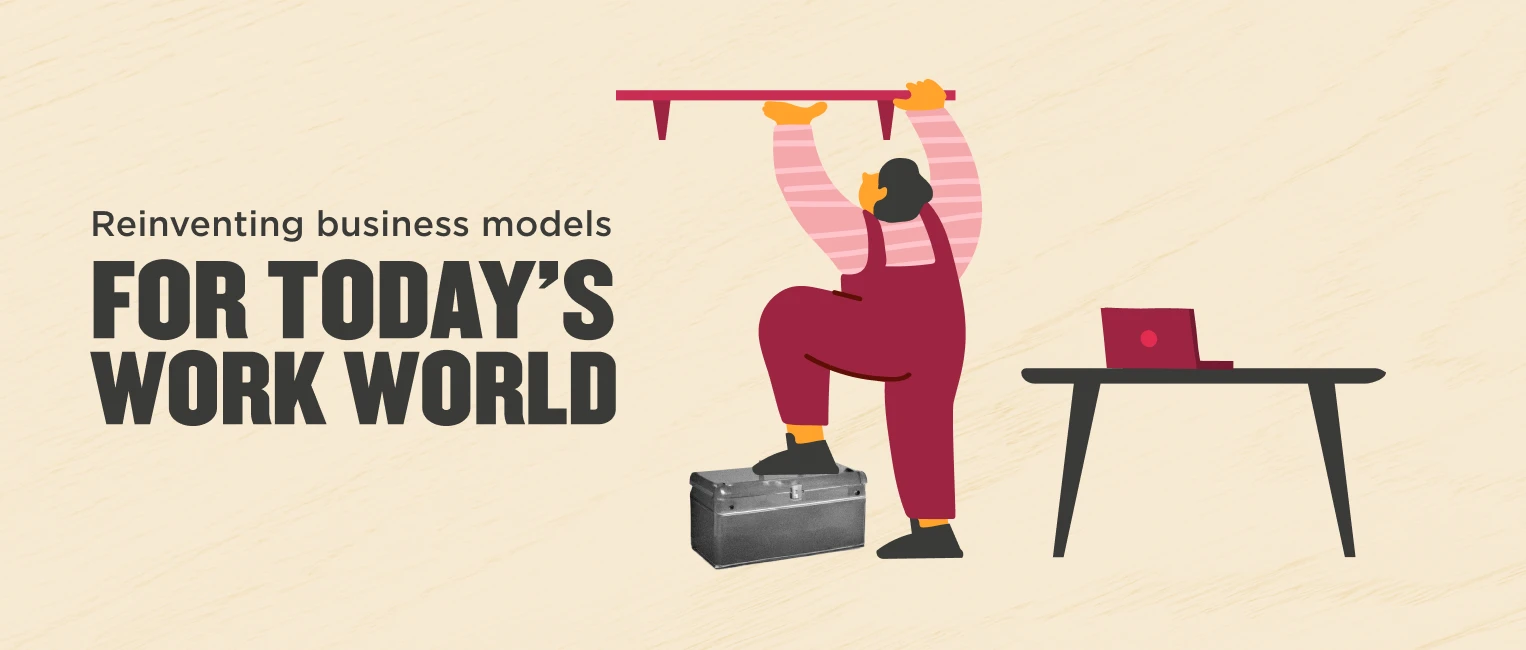We are in an undeniable moment of extreme change. Three years past the beginning of the COVID pandemic, the world we live and work in looks completely different than before. We’ve experienced unprecedented hypergrowth and record inflation. Our workforces have been rocked by the Great Resignation. Widespread hybrid and global work structures are now normalized.
In his HR Predictions for 2023 report, Josh Bersin weighs in on this age of constant and transformational change: “The year 2023 will be a year of transition as we redefine work, the workforce, and HR … CEOs and CFOs are going to push to maintain and grow profits, focus on cash and financial sustainability, and search for new postures for growth.”
He explains that a combination of these changes and others will drive organizations “to rethink their workforce plans. CHROs and employee-facing teams must consider that these pressures will take place in a workforce that is quite tapped out,” and where there’s a major “disconnect between employee and employer perception of productivity,” where 87 percent of employees feel highly productive at work but only 12 percent of leaders agree.
While no one can truly predict what will happen next, one thing is certain: change. In order to keep their edge and come out on top, businesses will need to shift their thinking and reinvent business models to evolve with the times.
To succeed, organizations must employ agile and people-centric models to create new ways of working and pioneer innovative paths. It all starts with combining out-of-the-box workforce planning strategies with the adoption of modern HR tech to help cut through the administrative noise and focus on ROI. As you work on building your strategy, keep these tactics top of mind.
1. Weave people tech into your daily flow of work
Taking every step you can towards efficiency and innovation is key to ensuring your organization can stay ahead in the modern working world. Whether it’s comms tech, payroll, learning management systems, productivity, employee engagement and performance, perks and recognition, or one of the other many types of HR tech designed to simplify and optimize HR processes, people tech delivers high ROI.
By automating repetitive tasks and generating data-based insights, HR tech helps organizations save time and money while making it easier for people to work together whether they are on the same team in the same office or continents away from one another. This enables your organization to stay agile, boosting productivity and improving innovation—and, with it, the bottom line.
2. Build tech adoption into your workforce planning strategy
At this current rate of change and technological development, skills become obsolete faster than anyone can finish a certification. You can keep your workforce’s skills fresh by leaning on new tech and integrating it into your organizational and team workflows.
This will ensure people receive the constant on-the-job training and experience they need to keep up. You’ll also be able to avoid laying off people with outdated skills, as well as spending on intensive recruitment of individuals with rare experience and skill sets.
At the same time, you’ll keep your people’s skills relevant in the modern world of work, to which they’ll respond with appreciation, higher engagement, and better loyalty.
3. Commit to workforce diversity
The emerging multifaceted workforce goes beyond racial diversity. Today, diversity refers to nationality, a spectrum of genders, five different generations, language, cognitive skills, race, and more. It’s up to organizations to implement the education, training, and initiatives required to create true DEI&B for each of these groups.
One approach to consider is creating mutual understanding and belonging with a people-centric business strategy attentive to why and how people work. Understanding one another’s motivations can help forge bonds across different backgrounds, helping foster better teamwork and cooperation.
4. Focus on the human element and impact
With such a diverse workforce, it’s important that HR doesn’t assume what people may need. Rather, retaining top talent requires adopting an approach that sees people as humans and individuals. Engage your talent in conversations about what they want and need from the workplace. Allow people’s needs—as told by them—to inform HR programs and policies.
And remember that people’s differing preferences also apply to how they would feel most comfortable communicating their needs to you. To accommodate this, offer multiple options for sharing feedback, including group discussions, anonymous surveys, and one-on-one follow-ups.
Recommended For Further Reading
5. Actively support new career paths
In an environment in which market evolution and emerging technologies are shaking up career paths, professionals across industries are prioritizing reskilling and upskilling. According to recent research, 74 percent of today’s professionals “are willing to learn new skills or retrain in order to remain employable.”
In fact, it’s more than willingness: It’s a priority for a significant portion of the workforce. For example, 87 percent of Millennials claim development opportunities are extremely important when deciding whether to apply for a position. Yet only 29 percent of employees are “very satisfied” with the current career advancement opportunities their organizations provide.
Organizations that actively invest in helping their people grow reap the benefits of what any great employee experience delivers: an engaged, satisfied, and productive workforce. An investment in current team members and a commitment to learning and development opportunities for candidates and newcomers is the best investment you can make in your modern company. Above all, this may be the cornerstone of a people strategy that helps you remain relevant and agile in today’s fast-evolving markets and economic climates.
Keep your edge in the modern world of work
With the world experiencing rapid change and unprecedented challenges, organizations must reinvent their business models to keep their edge in today’s market. By employing agile and people-centric models and adopting modern HR tech, businesses can adopt future-ready ways of working and pioneer innovative paths.
In embracing business models with the ability to adapt to market and career evolution, you can create a workforce that is engaged, productive, and resilient. This is the key to driving growth and financial sustainability and (most importantly) to thriving in today’s market.


